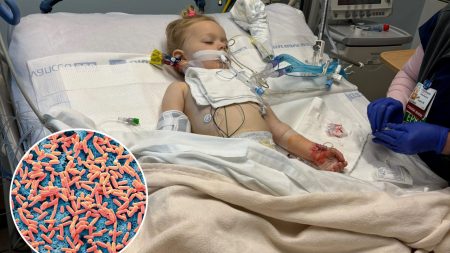This case study details a rare and potentially dangerous instance of a woman experiencing an allergic reaction to her partner’s semen after he had consumed Brazil nuts. The 20-year-old woman, who had a known severe allergy to Brazil nuts, developed intense itching, swelling in her vulva, faintness, and shortness of breath shortly after intercourse. Recognizing the symptoms of an allergic reaction, she promptly took an antihistamine, which alleviated the symptoms within 45 minutes. This incident, treated by immunologists at St Helier Hospital in Surrey, is believed to be the first documented case of Brazil nut proteins being transmitted through semen and causing an allergic reaction.
The woman’s partner had consumed a handful of Brazil nuts several hours before the encounter. Despite taking precautions such as bathing, brushing his teeth, and cleaning his nails, the allergen proteins apparently persisted in his semen. The couple had opted not to use a condom as the woman was on the contraceptive pill, a decision that, in retrospect, likely contributed to the allergic reaction. To confirm their suspicions, doctors performed skin prick tests using the partner’s semen, once before he consumed nuts and again a few hours after nut consumption. The second sample, taken after nut ingestion, triggered a clear allergic reaction, confirming the presence of Brazil nut allergens in the semen.
This case highlights the potential for allergens to be transmitted through bodily fluids, including semen, and the potential for severe reactions in individuals with significant food allergies. While there are documented cases of localized allergic reactions after intimate contact due to direct allergen transfer through touch or kissing, this case is unique due to the systemic reaction and the transmission pathway via semen. The medical team published their findings in the Journal of Investigational Allergology and Clinical Immunology in 2007, emphasizing the novelty of this case and suggesting the possibility of other food proteins being transmitted through semen, posing a potential risk to individuals with food allergies.
The incident underscores the importance of open communication between partners regarding allergies and the need for precautionary measures, especially in cases of severe allergies. The medical advice given to the woman was to abstain from intimacy after her partner had consumed nuts and to keep antihistamines and an adrenaline auto-injector readily available. This recommendation reflects the potential severity of allergic reactions and the need for immediate intervention in case of anaphylaxis.
Allergic reactions can range from mild to severe, with anaphylaxis being the most severe and life-threatening form. Mild to moderate symptoms can include itching, swelling, rashes, gastrointestinal distress, and respiratory symptoms like sneezing and a runny nose. Severe symptoms of anaphylaxis, however, can involve swelling of the throat and tongue, difficulty breathing, swallowing difficulties, dizziness, faintness, and changes in skin color. Anaphylaxis is a medical emergency requiring immediate treatment.
In the event of a suspected anaphylactic reaction, it is crucial to administer an adrenaline auto-injector if available, call emergency services immediately, and lie down, potentially elevating the legs and/or shoulders depending on symptoms and pregnancy status. Removing the sting if the reaction is due to an insect bite is also recommended. If symptoms don’t improve after five minutes, a second dose of adrenaline should be administered. Avoiding standing or walking, even if feeling better, is important to minimize the risk of complications. This case study emphasizes the importance of understanding allergies, recognizing their symptoms, and taking appropriate precautions and actions to manage potential reactions, particularly in intimate situations. The unexpected transmission of allergens through semen highlights the need for ongoing research and awareness regarding the diverse ways allergens can be transmitted and the potential risks they pose to susceptible individuals.











